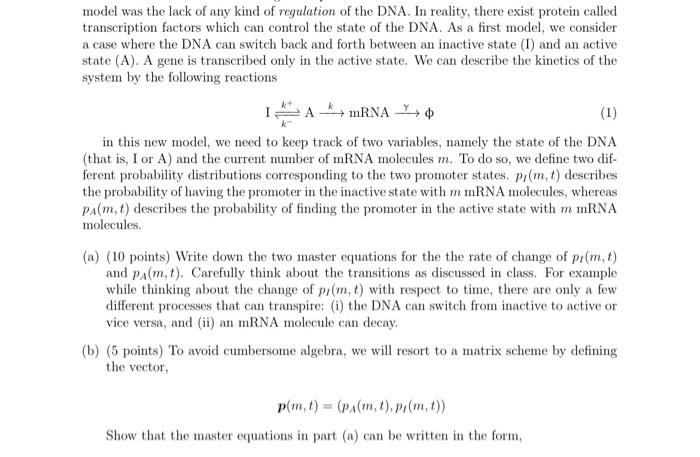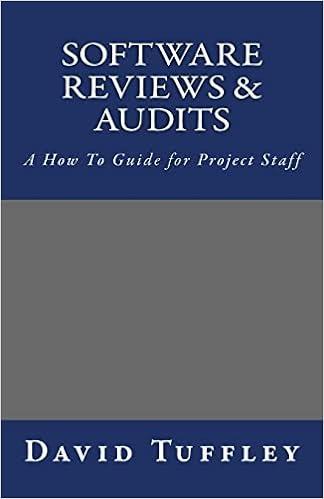i really appreciate step by step answers. thank you

model was the lack of any kind of regulation of the DNA. In reality, there exist protein called transcription factors which can control the state of the DNA. As a first model, we consider a case where the DNA can switch back and forth between an inactive state (I) and an active state (A). A gene is transcribed only in the active state. We can describe the kinetics of the system by the following reactions Ikk+AkmRNA in this new model, we need to keep track of two variables, namely the state of the DNA (that is, I or A) and the current number of mRNA molecules m. To do so, we define two different probability distributions corresponding to the two promoter states, pI(m,t) describes the probability of having the promoter in the inactive state with m mRNA molecules, whereas pA(m,t) describes the probability of finding the promoter in the active state with m mRNA molecules. (a) (10 points) Write down the two master equations for the the rate of change of pI(m,t) and pA(m,t). Carefully think about the transitions as discussed in class. For example while thinking about the change of pI(m,t) with respect to time, there are only a few different processes that can transpire: (i) the DNA can switch from inactive to active or vice versa, and (ii) an mRNA molecule can decay. (b) (5 points) To avoid cumbersome algebra, we will resort to a matrix scheme by defining the vector, p(m,t)=(pA(m,t),pl(m,t)) Show that the master equations in part (a) can be written in the form, dtdp=(KRm)p(m,t)+Rp(m1,t)+(m+1)p(m+1,t) Where K,R, are 22 matrices. Derive their forms. Their elements should be functions of the rate constants. c) (5 points) It is convenient to define the partial kth moments, mIk=m=0mkpI(m,t);mAk=m=0mkpA(m,t) The kth moment vector is defined as, mk=(mAk,mIk) Note that mk is a function of m and t. Show that the following two equations are true for the zeroth moment. um0dtdm0=1=Km0 Where u=(1,1) is a vector of ones, and 0 is a two-vector of zeros. Our goal is to evaluate the first two moments of the distribution m and m2. d) (12 points) Show that the time evolution of the first and the second moments satisfy, dtdm1=(K)m1+Rm0dtdm2=(K2)m2+(2R+)m1+Rm0 e) (3 points) Consider the steady state of this system where all time derivatives vanish. By considering the equations for the zeroth moments, show that, mA0=1+KK;mI0=1+K1 where K=kk+. (f) (5 points) For the first moment at steady state, note that one can write the equation, m1=(K)1R(m0 where A1 is the inverse of matrix A. Thus, show that, mA1mI1=k(k++k+k++)mA0=k(k++k+k)mA0 which clearly show that the mean level of total mRNA is given by, m1=mA1+mI1=kmA0 (g) (10 points) Show that at steady state the total second moment, defined as m2= mA2+mI2 satisfies (Warning: cumbersome algebra), m2=21(kmA0+2kmA1+m1) (h) (5 points) Show that the dispersion in the levels of the mRNA satisfies, m12=1+m1k+kk++k+ where 2=m2m12. This clearly shows that the variance for a two-state gene can be larger than the variance of a single-state gene derived in class










